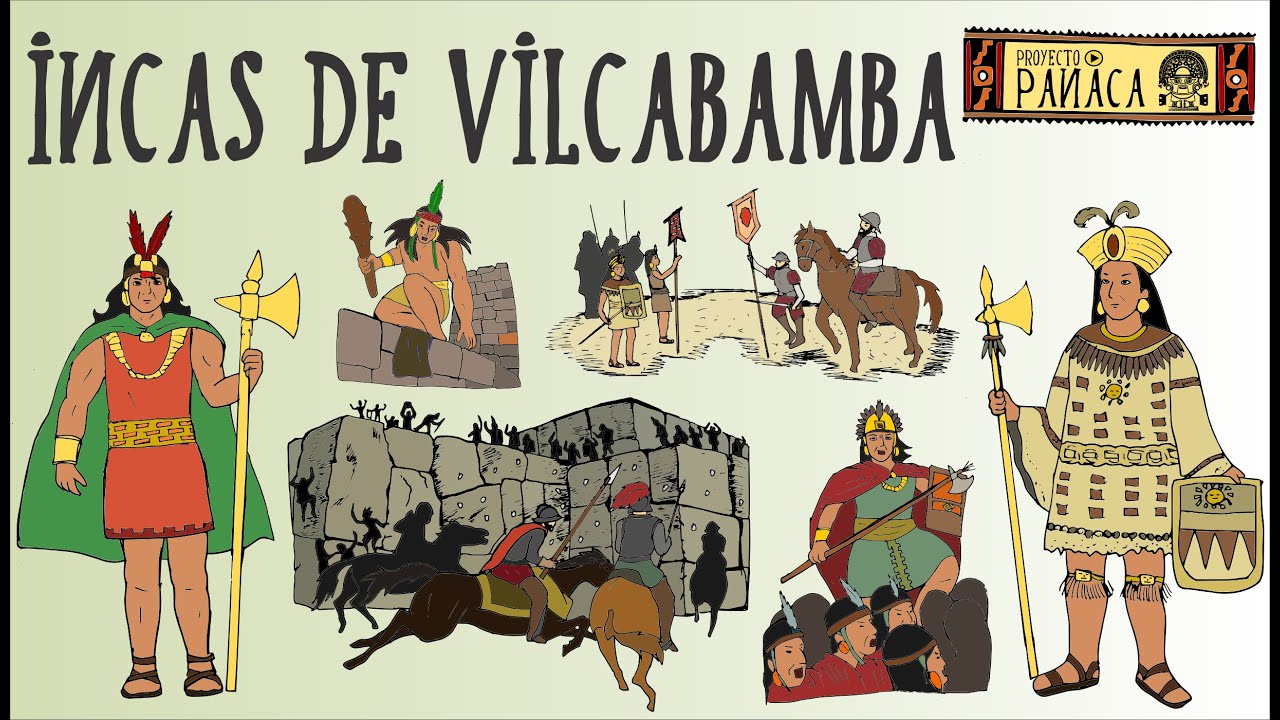Spanish Conquest of the Incan Empire
Summary
TLDRHace 500 años, en los Andes nevados, dos imperios colisionaron, marcando el inicio de la conquista de la civilización inca por parte de los españoles. Francisco Pizarro, tras obtener el permiso real, lideró un grupo de 168 hombres hacia el Perú. La enfermedad desconocida, la viruela, debilitó al imperio inca, causando la muerte del Sapa Inca Huayna Capac y su heredero. La lucha por el trono entre sus hijos, Atahualpa y Huascar, desencadenó un caos que facilitó la conquista. En Cajamarca, Pizarro y su pequeño grupo capturaron a Atahualpa, demandando un rescate que el Sapa Inca cumplió. Sin embargo, su muerte traicionada selló el destino del imperio.
Takeaways
- ❄️ Hace 500 años, en los Andes nevados, los conquistadores españoles y el Imperio Inca chocaron en un encuentro que cambiaría la historia.
- ⚔️ Francisco Pizarro recibió permiso real para conquistar Perú en 1529 y se preparó para invadir el Imperio Inca.
- 😷 La viruela, una enfermedad desconocida para los incas, llegó antes que los españoles y mató al 90% de la población, incluyendo al Sapa Inca Huayna Capac.
- 👑 La muerte de Huayna Capac provocó una guerra civil entre sus hijos Atahualpa y Huáscar por el trono del Imperio Inca.
- 🏞️ En 1532, Atahualpa venció a Huáscar, pero los conquistadores españoles, liderados por Pizarro, llegaron a Cajamarca para capturarlo.
- 📜 Pizarro y sus hombres usaron una estrategia similar a la de Cortés en México, capturando a Atahualpa para desestabilizar el imperio.
- 💣 En Cajamarca, los españoles emboscaron y masacraron a los guerreros incas, capturando a Atahualpa.
- 💰 Atahualpa ofreció llenar una habitación de oro y dos veces de plata a cambio de su libertad, pero fue traicionado y ejecutado en 1533.
- 🚶♂️ A pesar de la muerte de Atahualpa, la conquista del Imperio Inca no había terminado; los españoles marcharon hacia Cuzco.
- 🔥 Atahualpa, considerado un dios por los incas, fue bautizado antes de ser estrangulado, lo que alteró profundamente a su pueblo.
Q & A
¿Cuándo se produjo la colisión histórica entre los Conquistadores y el Sapa Inca?
-La colisión histórica entre los Conquistadores y el Sapa Inca se produjo hace aproximadamente 500 años, en las montañas nevadas de los Andes.
¿Qué tipo de armas se enfrentaron en el choque entre los Conquistadores y los Incas?
-En el choque, las armas de los Conquistadores como el arquebuse se enfrentaron a las armas de los Incas, como el guayaca.
¿Quién recibió a Hernán Cortés después de su conquista de México?
-El Emperador de la Santa Romana Imperio y Rey de España, Carlos V, recibió a Hernán Cortés en Toledo después de su conquista de México.
¿Cuál fue el regalo que Francisco Pizarro planeaba ofrecer al Rey para impresionarlo?
-Pizarro planeaba ofrecer oro, plata, plumas, nativos y criaturas desconocidas fuera de los Andes.
¿Cuándo y por quién se otorgó la licencia real para conquistar el Perú?
-El 26 de julio de 1529, Pizarro fue otorgado una licencia real para conquistar el Perú por el Rey de España.
¿Qué enfermedad devastó al imperio Inca antes de la llegada de Pizarro?
-La viruela, una enfermedad eurasiática, devastó al imperio Inca antes de la llegada de Pizarro, matando a millones, incluido el Sapa Inca Huayna Capac y su heredero.
¿Cómo se enfrentó el imperio Inca a la llegada de los extranjeros liderados por Pizarro?
-El Sapa Inca Atahualpa, en lugar de matar a los extranjeros, decidió conocerlos y a sus 'gigantes carmellos', sintiendo curiosidad y confiando en la superioridad de su ejército.
¿En qué fecha y lugar se produjo el encuentro entre Atahualpa y los Españoles?
-El encuentro entre Atahualpa y los Españoles se produjo el sábado 16 de noviembre de 1532 en la plaza central de Cajamarca.
¿Qué documento se le leyó a Atahualpa durante el encuentro y qué significaba?
-Se le leyó el Requerimiento a Atahualpa, un documento que informaba a los pueblos nativos de la América de que España tenía el derecho divino de conquistar estas tierras en nombre de Dios.
¿Cómo reaccionó Atahualpa al ser leído el Requerimiento y a la oferta de una Biblia?
-Atahualpa, horrorizado y considerando un acto de blasfemia, escupió y apartó el libro, lo que llevó a los Españoles a atacar.
¿Cómo y por qué fue ejecutado finalmente Atahualpa?
-Atahualpa fue ejecutado el 26 de julio de 1533 en Cajamarca. A pesar de haber cumplido con su promesa de llenar una habitación de oro y plata, los Españoles consideraron que había perdido su utilidad y era una amenaza, por lo que lo ejecutaron tras bautizarlo para evitar que su cuerpo fuera quemeado.
Outlines

Этот раздел доступен только подписчикам платных тарифов. Пожалуйста, перейдите на платный тариф для доступа.
Перейти на платный тарифMindmap

Этот раздел доступен только подписчикам платных тарифов. Пожалуйста, перейдите на платный тариф для доступа.
Перейти на платный тарифKeywords

Этот раздел доступен только подписчикам платных тарифов. Пожалуйста, перейдите на платный тариф для доступа.
Перейти на платный тарифHighlights

Этот раздел доступен только подписчикам платных тарифов. Пожалуйста, перейдите на платный тариф для доступа.
Перейти на платный тарифTranscripts

Этот раздел доступен только подписчикам платных тарифов. Пожалуйста, перейдите на платный тариф для доступа.
Перейти на платный тарифПосмотреть больше похожих видео
5.0 / 5 (0 votes)






